- Lynn Guthrie
- Jan 28
- 7 min read
Updated: Nov 6
Key Points
Look for a flea collar for cats that kills fleas and ticks on contact.
There are different types of flea collars, including repellent and chemical collars.
Some cats can be sensitive to the ingredients in flea collars, so speak with your vet if you have concerns.
Is your home starting to feel like the Itchy and Scratchy show? If your cat is scratch, scratch, scratching incessantly, they may have fleas.
Ignore these little black parasites at your own peril. If a flea infestation gets bad enough, fleas can and will bite people. (And we haven't even mentioned other bloodsucking, skin-crawling parasites like ticks.) Of course, keeping your cat healthy and happy should be motivation enough to be proactive. Cats who suffer from flea infestations are vulnerable to flea-borne diseases and skin infections, so protection is crucial for their overall health.
With so many cat flea collars, repellents, and natural remedies on the market, you may be wondering how to best protect your kitty. Since most cats aren’t too keen on oral treatments, sprays, or bathing, flea collars play an important role in parasite defense.
How do cat flea collars work?
A flea collar for cats contains active ingredients that are distributed through skin contact. They’re similar to topical flea treatments, but they don’t leave a messy, oily residue on their fur.
The most effective flea treatment collars contain insecticides that kill fleas and ticks on contact, keeping your kitty parasite-free.
Some flea collars offer up to 8 months of protection. In comparison, topical treatments need to be reapplied every month. This is a big reason some pet parents choose collars over topicals.
The collars vary in their effectiveness depending on the active ingredients, how fast they kill fleas, and how long-lasting they are.
It’s important to note: Most flea collars are not designed for use on kittens under 12 weeks of age. Senior cats, or adult cats with chronic illness, may also be more sensitive to the active ingredients in a flea collar. In these cases, talk to your veterinarian about your cat’s health and which flea collar will work best.
As a pet parent, the cost of vet bills can quickly add up, but you can save on some future expenses with a Pumpkin Pet Insurance plan. Get your cat the care they need, without the financial strain.
Active ingredients in flea collars
One of the most common ingredients in flea collars for cats is Imidacloprid. It mimics nicotine, a natural insecticide. Imidacloprid has been used since 1994 and works by disrupting fleas’ nervous systems. Collars with this insecticide often also include the insecticide Flumethrin, which protects against fleas and ticks with slow-release protection for up to 8 months.
Other insecticides used in flea collars include Fipronil, Etofenprox, and Pyreproxyfen.
Avoid products that use the insecticide Pyrethrin, as it’s unsafe for cats, despite being safe for dogs and found in dog flea medication.
Types of flea collars
There are two main types of flea collars for cats, and the right option will depend on the needs of your feline friend:
Repellent collars: These collars discourage fleas, ticks, lice, and mosquitos from hitching a ride on your cat, but it won’t kill them. Repellent collars are not effective if you’re already dealing with a flea infestation.
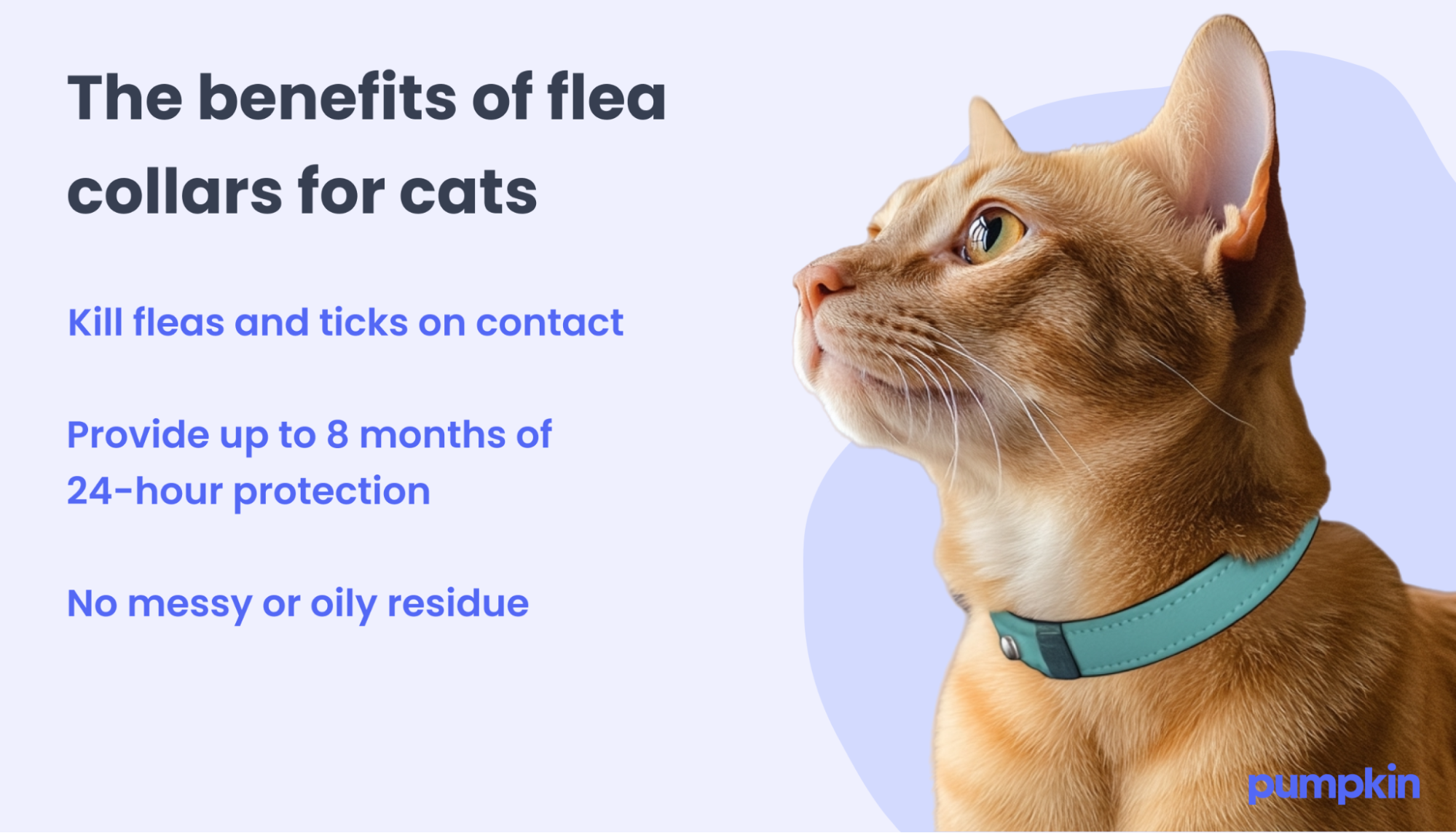
Chemical collars: These collars release the active ingredients slowly over time. They kill any insects that come in contact with your cat’s skin or fur. Chemical collars work well for flea prevention and flea infestations, killing all fleas in as little as 24 hours. Some can begin to kill fleas in just 2 hours.
Some cats may be sensitive to the active ingredients in flea collars. Check your cat’s neck frequently to make sure there is no skin irritation or hair loss.
Considerations when choosing a flea collar
Before purchasing a flea collar, there are a few features to consider:
Breakaway: A breakaway collar will release under pressure, preventing choking if it gets caught on something. This is great for outdoor cats who climb trees, scale fences, or walk through bushes.
Indoor and outdoor cats: Indoor cats only need protection from fleas and ticks. Outdoor cats may need protection from internal and external parasites. So, a full-spectrum collar or other parasite-prevention product may be the best option.
Waterproof: If you bathe your cat, or live in an area with heavy rains, a waterproof collar may be the right choice. You won’t need to take it on and off or worry about it losing its potency.
Length of effectiveness: Collars with longer protection may be more expensive. But the cost of replacing a collar every month does add up. Cheap flea collars can lose their effectiveness, or only protect the area around the collar, rather than the whole body.
Fit: Most collars are one-size-fits-all, with a long length to adjust to your desired fit. A collar should be tight enough to make contact with your cat’s neck, but loose enough to fit two fingers underneath it.
The 7 best flea collars for cats
To help you pick the right flea protection for your kitty, here are some of our favorite options from leading pet care brands.
1. Hartz UltraGuard Pro Flea and Tick Collar for Cats
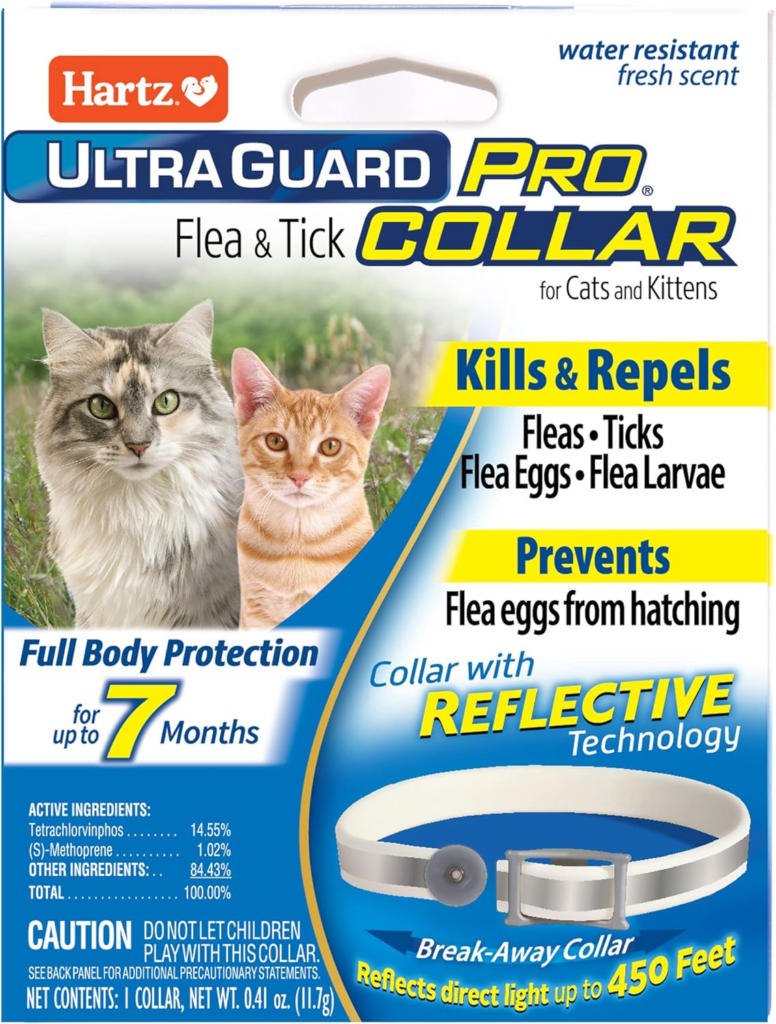
The Hartz Ultraguard flea collar is waterproof and comes with a breakaway, safe-release snap. The chemicals in this collar will kill fleas and ticks on contact and prevent them from hatching for up to 7 months. It’s a solid choice for flea infestations, too.
It’s safe for kittens older than 12 weeks of age, and the reflective strip will help you find your kitty with direct light at up to 450 feet.
2. Adams Plus Flea Collars for Cats
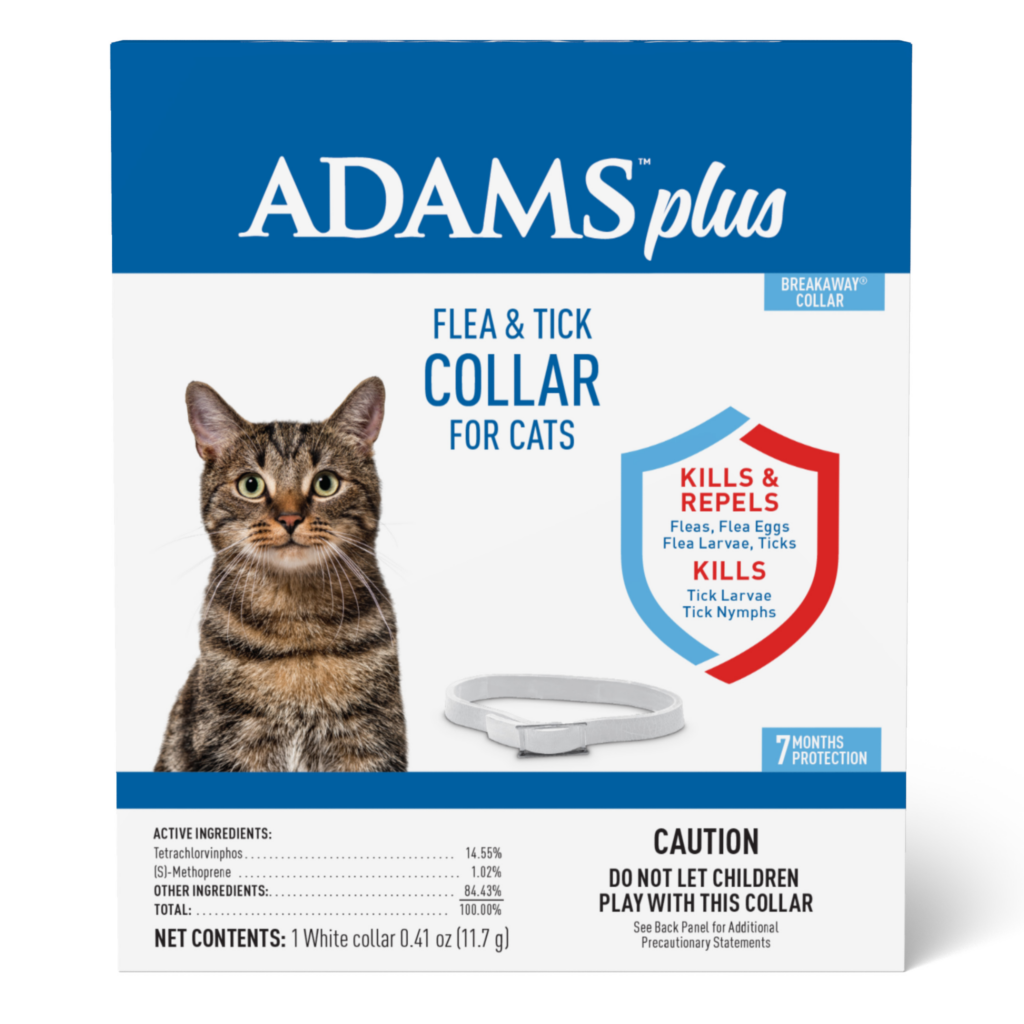
Adams Plus Flea and Tick Collar for cats is another top choice. The ingredients in this collar work their way down through your cat’s natural hair oils for head-to-toe protection.
This collar is fully adjustable and offers a break-away feature to give you peace of mind. It will give your cat up to 7 months of protection, and it targets the three stages of the flea and tick life cycle.
This product is suitable for cats over 12 weeks old.
3. Sergeant’s Guardian Flea and Tick Cat Collar
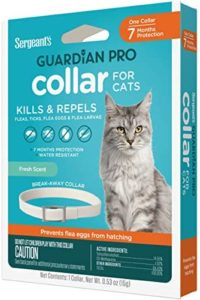
The active ingredient in the Sergeant’s Guardian Flea and Tick Cat Collar is Tetrachlorvinphos. This kills and repels fleas and ticks for up to 7 months.This flea and tick collar is inexpensive, water-resistant, and safe for most adult cats and kittens 12 weeks and older. It has a fresh, clean scent.
4. Bayer Seresto Flea and Tick Cat Collar
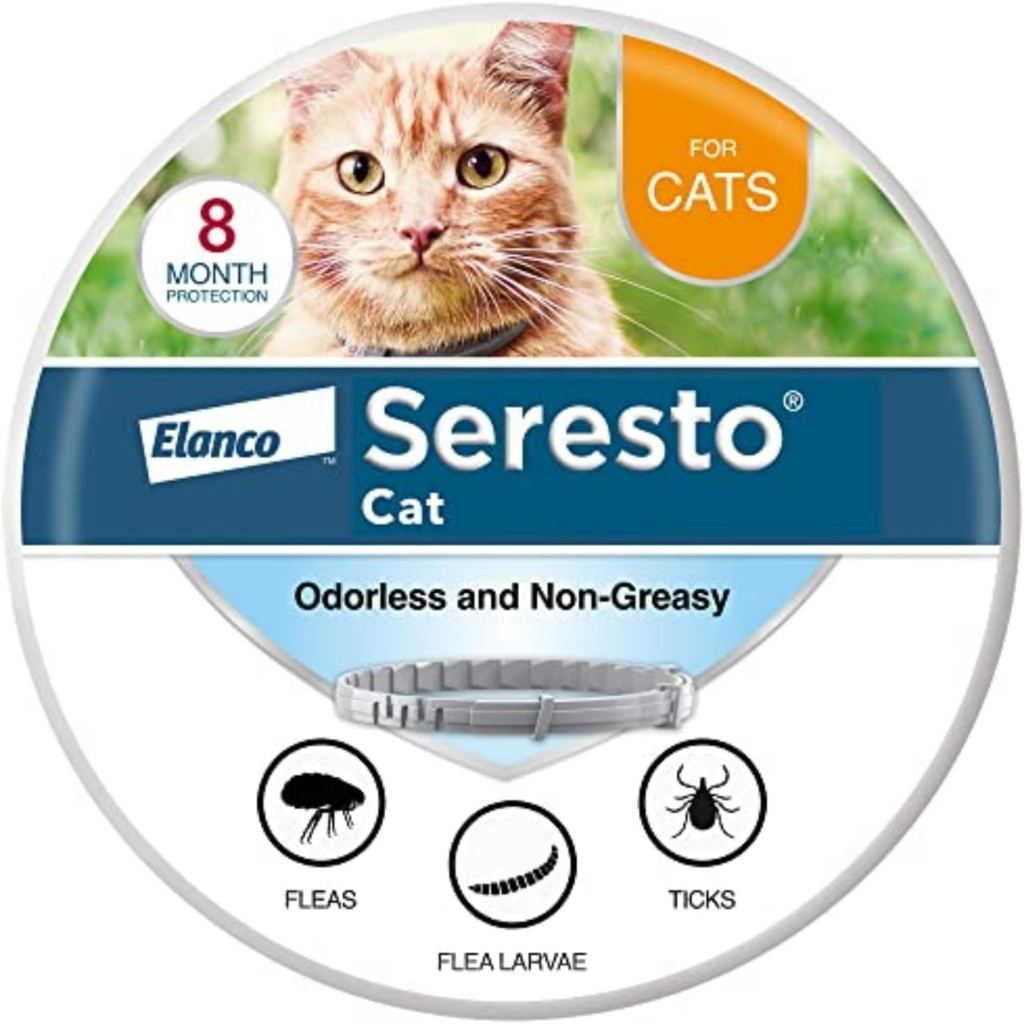
The Bayer Seresto Flea and Tick Cat Collar is a bestseller at both Amazon and Chewy for flea control. It's EPA-approved and long-lasting — and one of the most expensive products on the market.
Offering 8 continuous months of protection, the non-greasy collar works through contact. So, fleas and ticks do not need to bite the cat in order to be killed. It works within 24 hours of activation and protects against new fleas or infestations.
There are some fakes out there, so purchase a genuine Seresto Flea and Tick Collar from a reputable source. (We’ve linked to Amazon, where this product is sold and shipped directly by Amazon itself.)
5. PetArmor Flea and Tick Collar for Cats
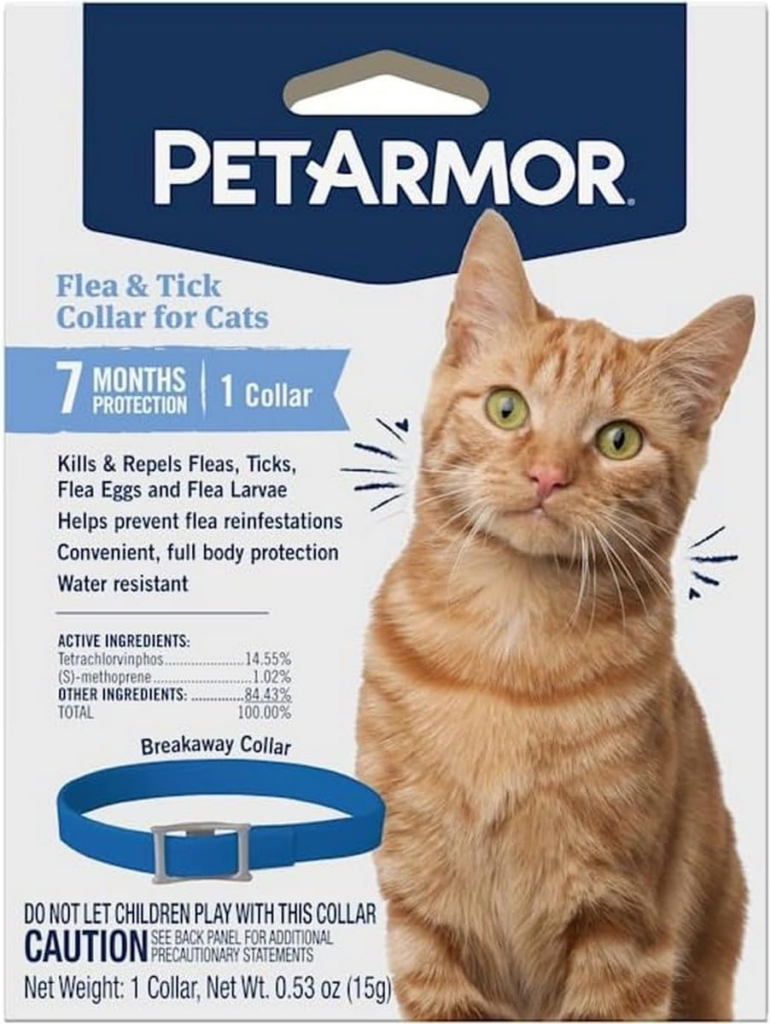
The active ingredients in the PetArmor Flea and Tick Collar for Cats are Tetrachlorvinphos and S-Methoprene, which protect against fleas, flea eggs, flea larvae, and ticks. The product is effective against re-infestations for up to 7 months.
The breakaway feature in the safety snap and included flea comb make it the perfect choice for adventurous outdoor kitties who’ve already picked up some hitchhikers. It’s made for cats 12 weeks and older.
6. Advanllent Flea Collar for Cats
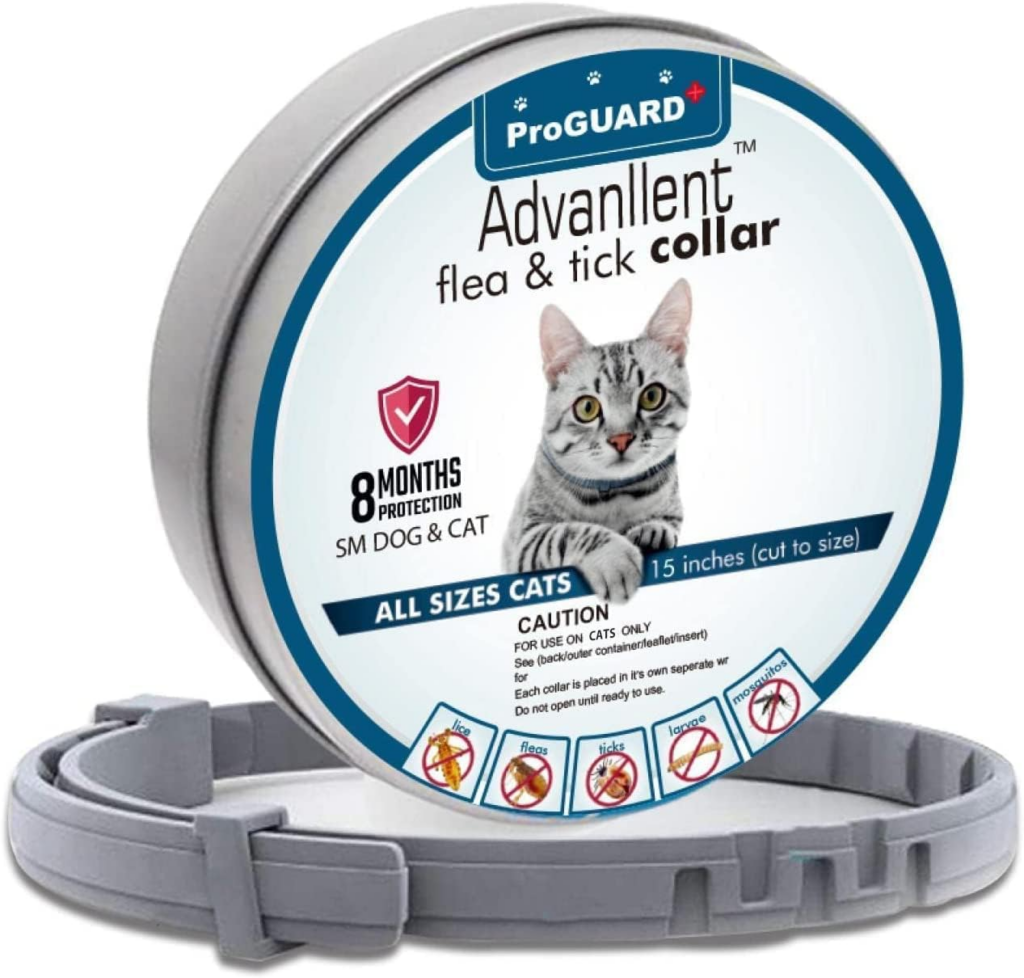
The Advanllent adjustable cat flea collar can last up to 8 months. It starts working within 24 hours and gives your feline friend flea protection in all weather conditions.
It’s even safe to wear in the bath if your cat likes the occasional dip.
This flea collar has Lemon Complex Oil, which may also repel other creatures, including mosquitoes. It’s safe for kittens from 8 weeks old and works well with other flea treatments.
Choosing the best flea collar for cats
Fleas, ticks, and other parasites are annoying and harmful to your cat. So, keeping them bug-free should be a priority. When choosing a flea collar, look for a solution that's adjustable, comfortable, and long-lasting.
Remember, if you have any questions about parasite control, make sure you check in with your vet.
FAQs
How do you treat a flea infestation in cats?
If your cat has a flea infestation, it’s important to treat them as soon as possible. Your vet may recommend a topical or oral medication, along with other measures. A flea bath and flea comb can help you spot any adult fleas and remove as many as possible to give your cat some immediate relief, but this is not a long-term solution. You should also vacuum the carpets and your cat’s bedding.
How long can a cat wear a flea collar?
The best cat flea collars last up to 8 months. Always make sure to follow the manufacturer’s directions for the collar you’ve purchased. Make sure the product is the right fit and comfortable for your cat. Check for signs of skin irritation or hair loss and remove it if there is a negative reaction.
Which is better, flea collar or drops for cats?
Flea collars offer longer protection, but there are pros and cons for both. As long as it’s a formula that’s made especially for cats, either option can be safe and effective.
REFERENCES
DISCLOSURE
Disclosure: This post contains affiliate links at no additional cost to you. We may earn commissions from Amazon or other vendors through these links. As an Amazon Associate, Pumpkin earns commissions from qualifying purchases.




